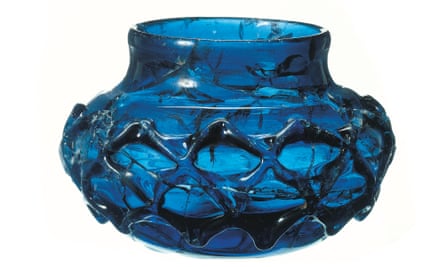It was hailed as an archaeological find as momentous as the treasures of Tutankhamun, a 1,400-year-old discovery so precious and rare that it has taken a further 15 years to be shown in its original resting place of Southend-on-Sea.
The Essex town makes a proud claim to be home to “the world’s longest pleasure pier”. But now it also boasts the Prittlewell princely burial – a permanent display of artefacts from an Anglo-Saxon prince’s tomb, discovered almost entirely intact, which opened to the public at Southend Central Museum.
“There have been queues this morning,” insisted Reg Wells, a museum volunteer handing out programmes to visitors. But inside the new gallery at lunchtime, only three people were peering through the display cases at meticulously restored blue glass beakers and shiny gold foil crosses. One hundred and ten antiquities from seventh-century England were discovered in the prince’s burial chamber in 2003, including a sword, shield and spears.

An analysis of the excavated artefacts began in 2012 in a project funded by Southend council and Historic England. More than 40 archaeologists, carbon daters and scientific specialists have been involved in work on each piece.
“It’s really wonderful,” said Wells. “We knew there was a Roman or Anglo-Saxon graveyard on the site, but it was only when they were widening the road that they got the shock of their lives. No one expected a square building full of treasures in this condition.” Would the display put Southend-on-Sea on the international map for history enthusiasts? Wells laughed. “It might help, maybe.”
Against a gentle background hum in the museum, a shriek erupted as one couple spotted a pair of helmets to dress up with in a specially designated selfie corner. Outside, Philip Holden and his two children, Alex, nine, and Emily, six, were getting ready to go home. What did they make of the display? “Well, I thought it was uhhhhm …” Holden, an accountant who moved to the town from London eight years ago, deferred to his children. “Boring,” said Alice. “All right,” shrugged Alex. “The gift shop was the best bit.”
“It’s really quiet in there,” said Holden. “We wanted to come along because we read an article about it opening. We found out about the burial because of a pub called Saxon King that was built next to the site.”
Like many coastal British towns, Southend-on-Sea’s population is older than the national average and it has suffered deep economic deprivation. The high street is replete with many boarded-up units, amid charity and phone shops and a pop-up tech store.
“It’s worse in the shopping centre,” said Kathleen Feeley, a tailor who runs her own business and has lived in the town for 40 years. “They built it, but there’s nothing in it because everything is closed, no department stores now – it’s a terrible waste.” Still, Feeley added that she was excited by the burial find and, sitting outside the Falcon pub on the seafront with four friends, she made a note to visit.
When the new permanent display was announced last week, the Prittlewell burial was described by Sophie Jackson, director of research at Museum of London Archaeology (Mola), as a kind of British equivalent to Tutankhamun’s tomb. It offered evidence, she said, of how Anglo-Saxon Essex was at the forefront of culture, religion and exchange with other countries across the North Sea.

But on the seafront on Saturday, a number of daytrippers were unaware of Southend-on-Sea’s new claim to rival Cairo, while few locals cared to comment.
“I think it’s good for older people,” said Henry Lander, 18. “I don’t think there’s much in it for people my age, but the seafront is good. It’s the best thing about living here – they’ve made it loads better than it was.”
He said he was lucky to have a job as a lot of his friends “struggle to find work, but it’s the same problems everywhere.” Like what? He shrugged. “Violence and crime. But it’s getting better.”
Feeley was also optimistic about the town’s future. “I enjoy everything about Southend because there’s plenty of entertainment for all ages,” she beamed. “It’s a wonderful place to come for families.”
